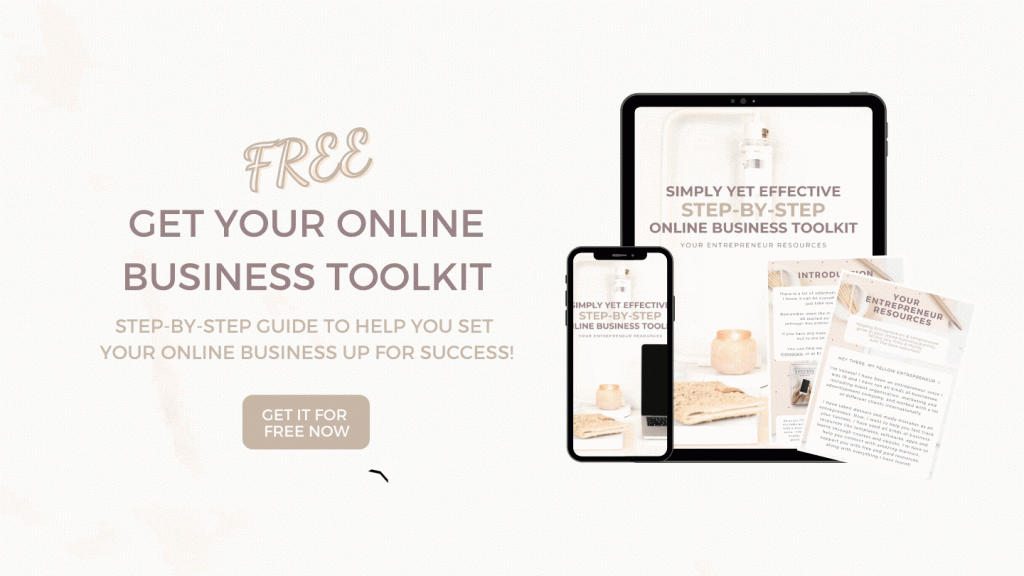Online marketing covers a lot of different aspects from social media marketing, SEO, content marketing and a lot more. One of the most important aspects of them all is having a solid email marketing strategy.
Perhaps you are already doing some email marketing. If so, then you are far ahead of all of the businesses who don’t do it. Whether you do it now or not, and no matter to what degree you are doing it, having an effective email marketing strategy is absolutely vital to your business reaching its full profit potential.
Here are 5 of the best practices to help you set up your email marketing strategies.
Table of Contents
Email Marketing Strategies
Step 1- Hone in on your email marketing efforts

Email marketing is one of the most effective and efficient methods to connect with your audience on a consistent and personal level. Once you learn how to use it to your advantage it can help you reach new customers and close more sales than almost any other form of marketing
Email Marketing Goals
The first thing you need to do is identify your email marketing goals, so that you can create an effective strategy. Ask yourself the following questions:
- Are you looking to get more traffic to your website or blog, so that you can increase subscribers and get more people into your sales funnel?
- Do you want to drive more traffic to your sales page, so that you can sell more products and services?
- Are you interested in making more affiliate sales?
Understanding what your main goals are will help you when it comes to creating your email marketing campaigns.
Email Autoresponder
After you have determined what your goals are, the next step will be deciding how you’re going to deliver your campaigns.
For this, you will need some type of email autoresponders like MailerLite, ConvertKit or Getresponse, if you don’t already have one.
Of course, you’ll have to decide a few other things too, like:
- What email format do you want to use?
- Will you be sending a newsletter, blog updates, or product notifications?
- What images or graphics to use as your logo and for branding to make your campaigns memorable and recognizable?
- What your subscription policy will be? For instance, will you require a single or double opt-in?
- – You’ll also need disclaimers and copyright statements. These are very important because they help you comply with the regulations for email marketing. If you have no idea what I’m talking about, don’t worry, here is an amazing free legal course to help you out.
- Do you plan to incorporate social media in your email marketing? This can be done with the click of the button inside most list management tools and it can be a great way to share your content in multiple places at the same time.
When it comes to creating an effective email marketing campaign there are a lot of things to consider, but don’t let that overwhelm you. Just take things one step at a time and before you know it you’ll have everything done.
The great thing about setting up and email system this way is that once it’s done, it will continue to work for you as long as you want it to, so be patient and take the time to set it up right.
Step 2- Who is your email marketing targeting?

As important as it is to know what your goals are, it’s even more important to know who your email list will be targeting, so that you can set up an effective lead campaign.
Clearly defining your audience makes all the difference when it comes to email marketing because it doesn’t matter how great your content and offers are if there’s nobody to see them.
So, who is your ideal audience?
The best place to start is by thinking about what your product or service can do for people. For example, if your business is building websites you’ll want to focus on business owners who want an online presence, not people who like to play tennis or go fly fishing.
Once you know who you’re trying to reach, think about what they like to do and where they like to go online. Do they use Facebook and Twitter, or do they prefer Instagram? All these things can be found out by conducting a little market research.
If you don’t know where to start take a peek at what your competitors are up to.
- Where are they posting content?
- What type of content are they posting? (text, images, video)
- Where are they investing their advertising dollars? (Facebook, Google, YouTube)
- Once you know who they are and how they like to consume content, you can create a campaign that will entice them to join your email list.
Next, you’ll want to find a way to motivate subscriptions

This is often referred to as an opt-in offer or lead magnet. This is the top of your email marketing funnel. It can be anything that you can offer to consumers in exchange for their email address.
Here are a few examples to help give you some ideas:
- A free download (report, ebook, video)
- A special offer like a discount or coupon
- Expert guidance or training
- Exclusive news and content they can’t find elsewhere
Creating a good opt-in offer will take time and testing, but once you get it set up it will continue to bring in new leads for your business automatically for as long as your offer is relevant to your audience.
When you have that done, you can create a content schedule that consistently provides value to your subscribers and helps you reach your goals.
You want your schedule to be consistent, this can and should include the days and times each email message will be sent, so that your subscribers will know exactly what to expect and look forward to.
When you consistently email your subscribers messages that contain relevant and useful information about your business, they will gain a better understanding of how your product or service can benefit them. They will also get to know like and trust you, which means they will be more likely to buy from you.
You also want your schedule to be easy to manage, especially if you’re going to be writing the content and managing your list yourself.
Here is an example of a consistent 3-day email schedule:
Monday – News and information about upcoming products, sales or events.
Wednesday – A little tip that will help them solve a problem along with an offer, coupon or discount.
Friday – A follow up with a gentle reminder that the sale or coupon will expire soon.
Of course, this is just an example, but you get the idea. Many successful email marketers mail their lists every day. However, you don’t want to start doing that right away. You have to build a relationship with them first and then if it makes sense for your market you can increase the frequency of your emails.
Lesson 3- Setting up your email autoresponder

An email autoresponder series is a great way to build a relationship with your new subscribers. As I mentioned in your last lesson, you don’t want to start emailing your list every day until they get to know you better. Setting up a series is the only exception to this rule, because it allows you to contact them in succession without making them feel like you’re bombarding them with unwelcome emails.
As you create your series keep in mind that one of the most important parts of setting up an effective email marketing campaign is to provide value that will help keep your subscribers active and engaged.
Figuring out what to write about can be a big stumbling block, especially if you don’t have any idea where to begin. To help you with this, sit down and generate a list of topics that will be of interest to your target audience. Just let the ideas fly. Don’t worry about grammar or editing until you have at least fifty ideas. You can always go back and fine tune your list later.
Be sure to think about what your business has to offer as you’re brainstorming. You can also include ideas for short tips, reminders and promotional emails. You want to have a good mix of long and short emails. This way you can contact your list more frequently.
If you are stuck for ideas, ask your current subscribers what they want to learn. Set up a survey or take a poll and find out what people in your target audience are interested in. Do a little research online. Look at what your target audience is chatting about on social media and (YES) look at what competitors are posting. If they are getting a good response on a particular piece of content, then create something similar.
Once you have a solid list of topics you can start creating the content. I like to organize my content chronologically so that I can send them out in order. Much like this short course.

Here is an example:
- Email one – Welcome/Introduction to your business and what it can do for them.
- Email two – Offer something of value to them (coupon – discount etc.)
- Email three – Follow up to see if there is anything you can help them with
- Email four – Invite them to connect with you on social media
- Email five – A short tip the help them solve a problem
- Email six – Send them to your website to read an article
- Email seven – You fill in the blank
You can do this with as many emails as your autoresponder will allow you to include. The goal here is to lead your subscribers down your sales funnel until they make a purchase.
Once you have all your emails written you can load them up into your autoresponder, set up the frequency and they will be sent automatically to every new subscriber that joins your list, in order.
Now, in my opinion it is never too soon to ask for the sale, so always include a solid call to action (CTA) in your emails. This can be as simple as saying “click here to get all the details” or “check out this special deal I have for you here”.
You always want to give your subscribers something to do, whether its visiting your website, checking out your post on Facebook or clicking the buy now button in your store. They will follow your lead, so let them know exactly what you want them to do.
Step 4- Driving traffic and getting leads

Setting up and promoting your opt-in page, so that you can add more subscribers to your list.
When it comes to getting more subscribers it’s important to think about promoting your lead magnet (free offer) just like you would a product someone would pay you for. Even though it’s free, you’ve still got to sell it and make your visitor want to leave their name and email address. Plus, you’ve got to make it so enticing, they’re going to want to open the emails you’re going to start sending to them.
Here are a few tips that can help:
Add an opt-in form on every relevant page of your website. Include an attention-getting headline and a compelling reason to subscribe. Don’t force your readers to scroll around to find the opt-in form. Make it easy for them to find, fill out and submit.
Set up a dedicate opt-in page, just like you would a sales page. You want this page to be free of distractions and completely dedicated to showing the benefits of joining your list. This is where you’ll send traffic from advertising campaigns.
Use images that represent your free offer. For example, a report cover, software box, etc. It’s always a good idea to have a graphical representation because it makes your offer more tangible and attractive to your visitor.
You can include things like:
- A catchy headline. If your reader has a problem, show them how your offer can help them.
- A persuasive description that shares the benefits they will enjoy after joining (explain what your business can do for them) so they will be excited to join your list and open your emails.
- Provide step by step instructions on how to join your list. Spell it out for them, so there’s no confusion. When you guide people through what they are supposed do, they are more likely to do it. Tell them: “Enter your first name and email address, then click “Submit”. Make it as easy as possible for them.
- A privacy policy. People are concerned about spam and may hesitate to give out their email address. Include a brief statement about what you do/don’t do with your readers’ personal information. You can include this at the bottom of the page. If you don’t know how to get started with this, check out this free legal course!
After you get that done you’re ready to start promoting. It’s time to spread the word. You can do this through paid advertising or by including links to your opt-in page in the following places:
- In social media, blog posts, guest blog posts, etc. You want a link to your opt-in offer in as many places as possible.
- Add a link to your website navigation that says, “Free Video Course” or whatever fits your unique offer. You can also add links in the footer of your page. I do this because people often scroll to the bottom first to look for links.
- Create videos and share them on Facebook and YouTube. In them tell your viewers where and how to sign up and include a link within or below your video.
- Co-promotion still works. All you have do is share other people’s offers, in return for them promoting yours.
- Look for popular podcasts that are related to your niche and see if they accept guests. If they will interview you then you can let their listeners know about your free offer.
The key is persistence, tracking and testing. The more people you can send to your opt-in page, the more subscribers you’ll add to your list and the more your business will grow, so you must test and track your results.
To do this you can use the tools built into your list management platform and Google analytics to get started. Of course, there are all kinds of powerful tracking tools available, but these free ones will do the job very well.
You can use them to see how many people are visiting your optin page, seeing your forms and joining your list. You can then determine your conversion rates to see if your offer is enticing enough to get people to actually give you their email address.
If you have a fair amount of traffic and you aren’t getting any signups then you will need to fine tune your opt-in page and maybe even your free offer. There are many things you can test, like headlines, font sizes, colors and so on.
You can do this with an A/B split testing campaign. This will let you test multiple versions of the same web page and find the one that works best for your visitors and it can be done within your tracking software.
That topic is a little bit beyond the scope of this short course, but it something that you should definitely explore, especially as your list grows.
Step 5- Build relationship with your audience with email marketing
If you want to achieve real success you need to build a relationship with your readers. Provide them with quality content and great advice so they will stay interested, engaged and coming back for more.
Here are a few tips that will help you make the most of your list:
1. Be consistent
As we discussed in your second lesson, it’s important to set up a regular schedule for keeping in touch with your subscribers. You want your readers to remember you and eagerly open your emails.
2. Speak directly to your audience

Get to know your readers and what they’re interested in. Understand their problems and help them solve them. Always, be sincere and write to them as if you’re writing a letter to a dear friend who needs your help.
If your goal is to sell more products, provide them with good information and a nice mix of relevant offers. The products you sell and recommend should enhance your readers lives, help them achieve their goals and solve their problems.
3. Focus on the CTA
As I mentioned in lesson three you should always include a solid call to action (CTA) in your emails. This can be as simple as saying “click here” or “check this out”. Give your readers something to do in every email you send. Even if its just sending them to read your latest blog post or watch a new video you shared on YouTube. By doing this you are teaching them to interact with you on a regular basis.
4. Easy on the links

While it’s tempting to share links to all kinds of exciting things in your emails, you don’t want to go overboard with the number you include in an email, especial if you want your readers to do something in particular. If this is the case, then make that the only link in your email. This will keep them from getting confused or distracted and help increase click throughs on that link.
5. Keep them interested

As riveting as we hope our readers will be, their attention spans will decline if they get bored and they won’t read through the entire email. Do your best to keep things interesting. Use headings and teasers to encourage them to keep reading. Keep your emails short and direct them to a webpage for more details if you have a lot to tell them.
If you are sending a newsletter with a few different topics or sections, make sure to mention the most important part at the beginning of the email, with a little reminder at the end or in the PS.
When it comes to running a successful email marketing campaign it’s very important to listen to your readers and be prepared to change with your market’s needs. As your list grows, you’ll gain new insights as to what works and what doesn’t. Be persistent, always track and test your results, so that you can fine tune your campaigns and remember consistency key.






0 Comments